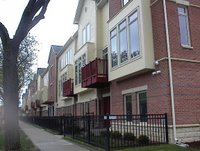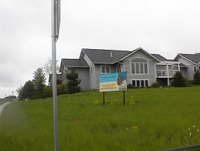This is part of the memo I recently wrote for the plan commission. Full memo with ordinance with notes on Legistar. (Links not currently working.)
1. Simplification of the Equity Model
Issues: None, plan commission passed ordinance resolving this issue.
2. Marketing
Issues:
a. Should there be a marketing period?
b. If no, how can/should we assist with ensuring eventual sale of IZ units (e.g. IZ homes cannot age out of program (discussed at 6/1 special meeting)
c. If yes, when should the marketing period begin for owner-occupied homebuilders?
d. When should the marketing period begin for a person who sells a lot?
e. Do we agree with the Hirsch language (in Note 2.2) ?
3. City Funded Non-profit Rental Exemption if 15% at 50% AMI or below
Issues:
a. Should for-profits be included?
b. Should dispersion be a requirement for the exemption?
4. City Funded Non-profit Ownership exemption if 15% at 70% AMI or below
Issues:
a. Should for-profits be included?
b. Should dispersion be a requirement for the exemption?
5. City Funded Non-profit Ownership exemption if 75% affordable at 80% AMI or below
Issues:
a. Should for-profits be included?
b. Should dispersion be a requirement for the exemption?
6. Existing Units for Off-Site Waiver Option
Issues:
a. Should existing units (vs. new construction) be included in the Off-Site Waiver Option?
b. Should we have minimal standards for rehab of existing units?
7. City Approval of Buy-Back Provisions
Issues:
a. Who in the City does the approval? Director of Planning and Development or their designee?
8. Removal of point system for incentives
Issues:
On-going discussion so issues vary from day to day – requires more background information for plan commission.
9. System to check if incentives off-set potential revenue
Issues:
On-going discussion so issues vary from day to day – requires more background information for plan commission.
10. Add Incentive: 10% IZ Free Zone
Issues: None? Previously discussed by plan commission, drafted separately and will be discussed during a separate agenda item on June 5th.
11. Add Incentive: Twin Homes
Issues:
a. Should we allow more than just duplex/twin units? Should we allow 4, 6 or 8 unit buildings?
b. What, if any, limitations should be put on how many units can be attached if the market rate units are detached?
c. Do we need to modify “dispersion” language to accommodate these changes?
12. Add Incentive: Change in Use in Neighborhood Plan
Issues:
a. Do we need criteria to determine when this is possible, how much residential, or do we leave it up to staff?
Note: Previous plan commission discussion involved modifying language to ensure that only “some” residential allowed in commercial areas (e.g. become mixed use) vs. changing to 100% residential. How much is “some?” Who decides?
b. If so, does the criteria go in the ordinance or policy?
13. Density Bonus
Issues:
a. How do we determine the base density for periphery neighborhoods?
b. How do we determine the base density for downtown projects?
14. Clarifying City Calculates IZ Sales Price
Issues: None? Simple clarification.
15. Marketing Plan required in the Inclusionary Dwelling United Plan (“IDUP”)
Issues:
a. What are minimum requirements of a marketing plan, if any?
b. If no marketing plan, how ensure eventual sale of IZ units (e.g. IZ homes cannot age out of program - discussed at 6/1 special meeting)
c. What if the marketing plan is not followed?
d. See related issues #1 in “Additional Issues” below
16. Elimination of requirement of City Notification of Improvements
Issues: None?
17. Elimination of requirement of City Notification of Refinancing
Issues: None?
Additional Issues:
1. Hirsch Proposal on Recapture of Incentives’ Value – if an IZ dwelling cannot be sold/rented during the second marketing period, then before the dwelling is made available as a market-rate dwelling, the developer shall pay to the City a cash amount equal to the value of incentives. (Assumes: (1) is a marketing period, (2) dwellings age out of IZ at end of marketing period)
2. How do the incentives provided to the developer of a lot get passed along to the homebuilder if the lot developer is not the homebuilder?
3. Add sections of IZ Policy to Ordinance?
4. Other items brought up by the public or plan commission members?
a. Alder Golden’s memo
If you know of additional issues that should be on this list, please feel free to contact me at brendakonkel@yahoo.com













